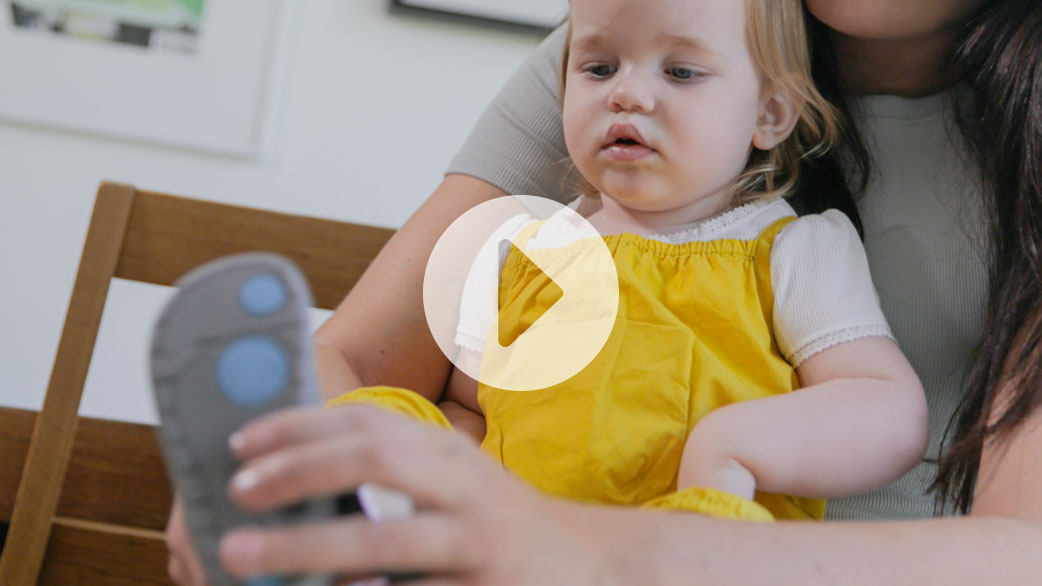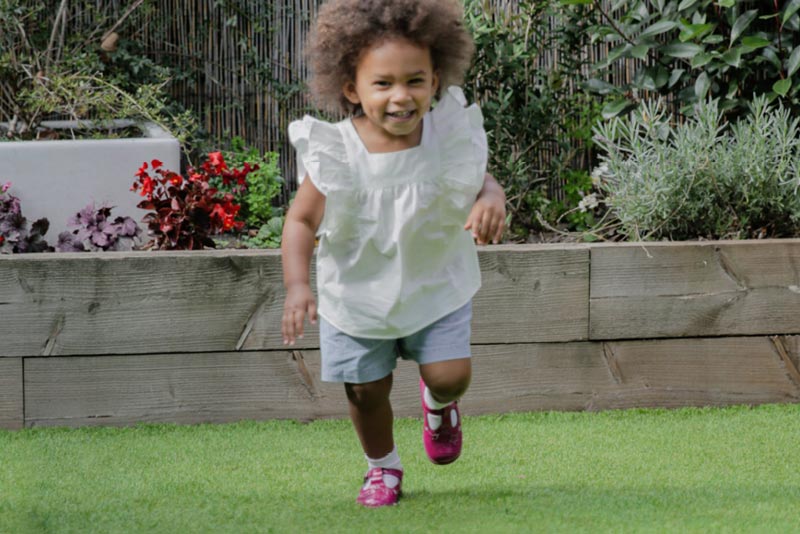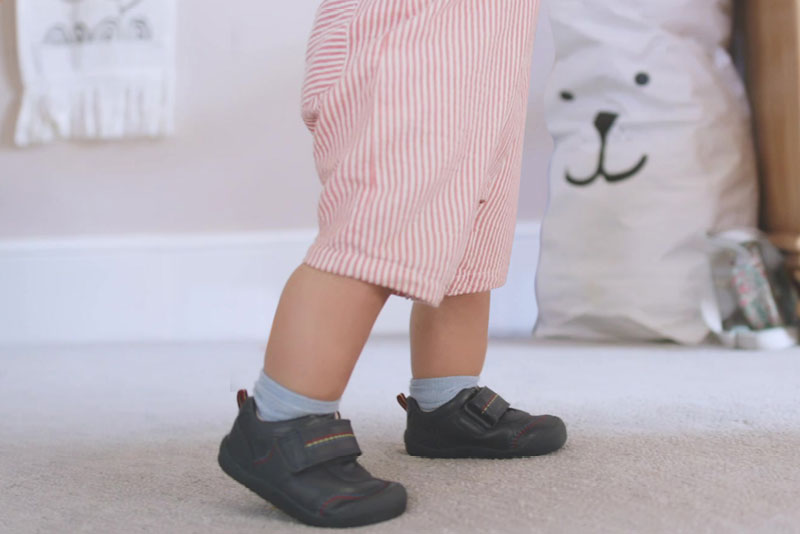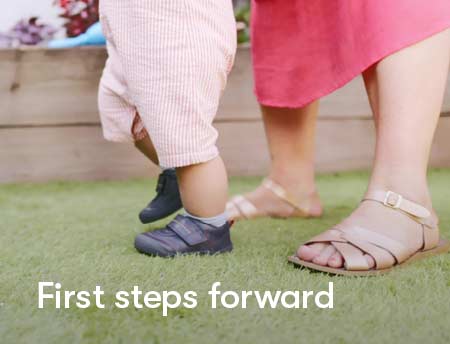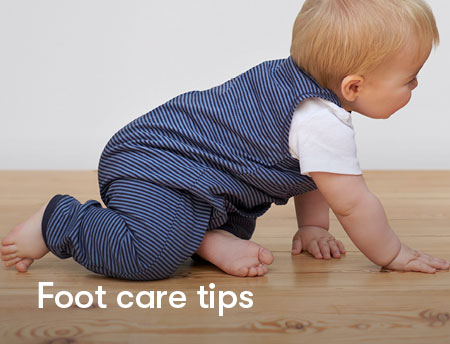DO get first shoes fitted.
“It’s an unusual feeling to have something wrapped around your foot, so it’s important the fit is just right,” says Karen. “When possible, children would see a trained fitter, who will fit them into a shoe that is allowing for growth. Choose a reputable brand.”
DO make sure your child is happy in their first shoes.
“If a child is in shoes that allow them to go out and explore and get around more, they’re not going to want to take them off – so during that first week if they are trying to take them off all the time or seem irritable and unhappy, there’s something wrong,” says Karen. “Look at the foot to see if there are any areas of redness or rub. Keep a close watch on your child’s gait. Has it changed? Is it more erratic? Are they tripping more often? Are they bumping into things?”


